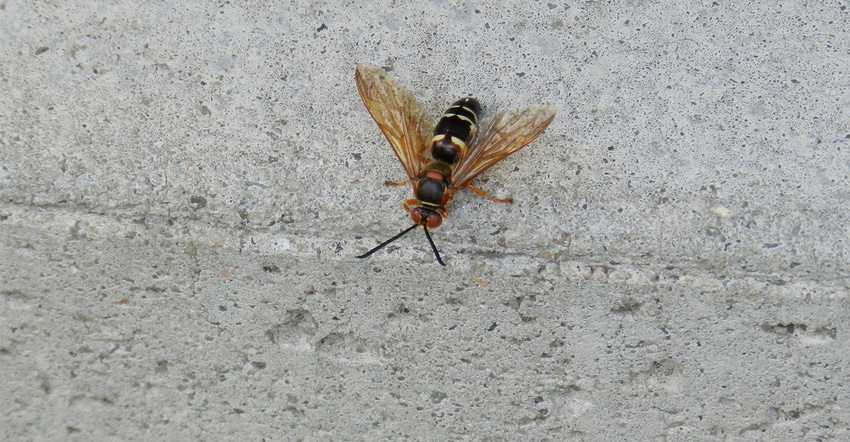May 24, 2022

Are there Asian giant hornets around the Great Plains? Have you heard about the so-called “murder hornets” yet? I certainly have. Ever since they made national news in 2020, I have been getting contacted about sightings that turn out to be other species of wasps.
There are copious amounts of misinformation about murder hornets and where they can be found. To help readers understand the situation and how it will affect gardens and landscapes, we will review what those in Nebraska should know about the world’s largest hornet species.
The correct name is the Asian giant hornet. As the name implies, its native range is eastern Asia. According to the USDA Animal and Plant Health Inspection Service, only Washington state has had a positive identification of an Asian giant hornet.
Canada has also had a few positive identifications in British Columbia. Both the Washington and British Columbia identifications are within about 75 miles of each other. Nearly 1,000 miles separates known detections from Nebraska, and that’s just the western side of the state.
This is largest hornet species in the world. The body length is 2 inches with a wingspan of 3 inches. These are bulky wasps. The coloration of this hornet varies in its native range. The base colors are yellow and black with some brown, but the head is always yellow. The closest wasp species in size comparison is the cicada killer wasp at an inch and three-quarters for body length.
Other hornets
There are other hornets that could be seen in Nebraska, as well. The two species that could be encountered are the bald-faced hornet and the European hornet. These two species will construct nests in trees or bushes. The Asian giant hornet nests in the ground or in cavities in trees. The nests of all these species of wasps are only used for one growing season.
Within its native range, the Asian giant hornet can be found in forest habitats, much like the Pacific Northwest. Most of Nebraska does not fit that description. Figuring out exactly where an invasive species will establish is difficult. The native range can be informative. However, more than climatic factors play a role. The ranges of suitable food sources and predators and pathogens can also influence an invasive species’ range in a new location.
What does this mean for your garden or landscape? Be reassured that you should not have to be concerned with the Asian giant hornet right now. You should still expect other wasps around your yard. Our typical wasp species are cicada killers, paper wasps, yellow jackets, mud daubers and a few others that are not troublemakers.
If you think you have found an Asian giant hornet, do not post it to social media. It is possible you have found one of the other species listed above. Good pictures can be sent by email to your Extension office for identification.
For the brave of heart, a specimen can be collected as well. Before taking that specimen to your local Extension office, be sure to call or email ahead for the proper procedure.
Ohnesorg is a Nebraska Extension educator in Madison County.
You May Also Like




